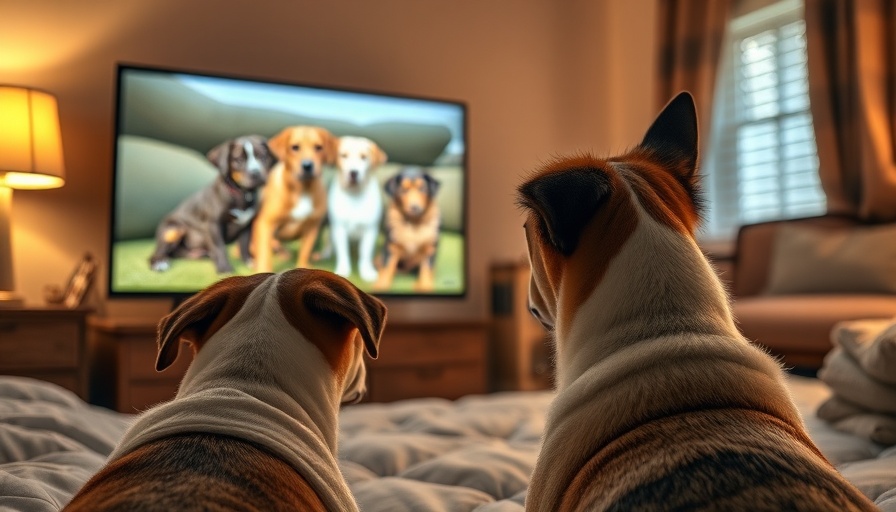
Do Dogs Truly Benefit from TV and Music?
As pet owners, we often ponder the effects of leaving our furry companions home alone. A common question arises: does playing TV or music help soothe them? With the hustle and bustle of our daily lives, ensuring our dogs feel comfortable during our absence is critical.
Research indicates that many dogs do respond positively to audio stimuli. Various studies have demonstrated that while dogs may not comprehend imagery on a screen like we do, the motion and sound can provide essential mental stimulation. Notably, breeds such as sporting and herding dogs are shown to engage more deeply with visual content.
What if TV is Too Distracting?
However, caution is warranted. Some dogs might find moving images and sounds overwhelming. Initial exposure to television should be monitored; observing how your dog reacts can prevent potential anxiety. The key is to recognize each dog's unique preferences. For instance, dogs might benefit from watching DOGTV, specifically designed to cater to canine senses, offering calming visuals and soothing sounds. This tailored content can help reduce anxiety by providing stimulation without overwhelming them.
Utilizing Music for Relaxation
Moreover, music is another effective tool for maintaining your dog's comfort level while you're away. Insights from the American Kennel Club highlight that softer melodies, notably classical music, have positively impacted dogs, reducing stress and anxiety. Dogs typically respond well to calm sounds, distinguishing the effect of genres on their mood. Rock or heavy metal music may induce restlessness, while soothing tunes promote relaxation.
Creating a Soothing Environment
Creating a calming environment before stepping out can significantly reduce stress for anxious pets. As an owner, consider mixing ambient sounds, such as soft rain or gentle nature recordings, into your dog's listening experience. The soothing qualities of nature soundtracks meld beautifully with calming visuals, establishing a serene atmosphere.
Recommended TV Shows and Channels for Dogs
When considering specific programming for your dog, options abound. Here are a few top choices:
- DOGTV: This dedicated service offers a variety of content explicitly designed for dogs, sorted into stimulation, relaxation, and exposure categories.
- Animal Planet: Filled with pet-friendly content that can keep your dog engaged and entertained, featuring other animals and nature-focused shows.
- Happy Dog TV: A Roku channel that includes visual media crafted with the canines' gaze in mind, offering comfort through familiar sounds.
Every Dog is Unique
While all these options are beneficial, the ultimate goal remains the same: to understand your dog's behavior. Observing their reactions can lead you to discover the right mix of audio-visual stimulation that works for them. Some dogs may find solace in the presence of familiar sounds; others prefer the predictable rhythm of classical music. It's all about creating a personalized environment that secures their comfort and reduces anxiety.
Final Thoughts on Leaving Your Pup Alone
As an essential part of our families, dogs thrive on companionship and familiarity. Leveraging music and TV as comforting background noise can do wonders for their emotional well-being. Understanding how your malleable furry friend interacts with the world, through varied media, can help you craft an enriching at-home environment even in your absence. Now, consider these strategies to enhance your dog's day, easing their worries while maintaining their joy.
 Add Row
Add Row  Add
Add 




Write A Comment